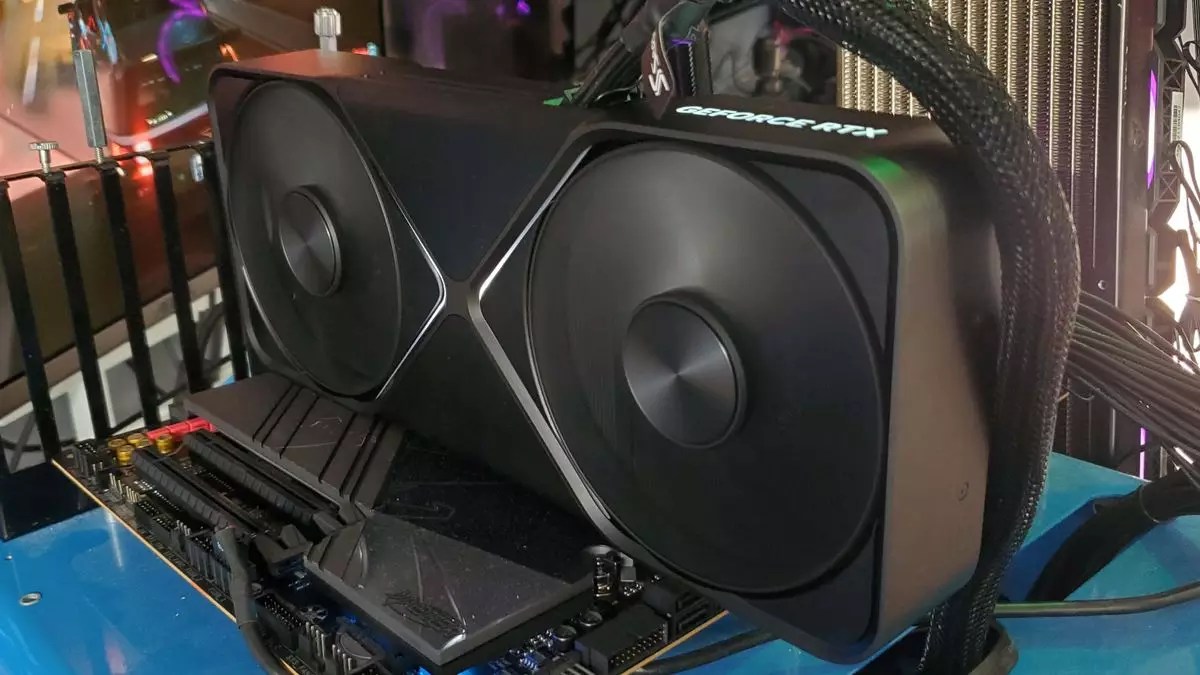The recent launch of Nvidia’s RTX 50-series graphics cards has sparked considerable excitement in the tech community; however, it is overshadowed by multiple challenges that have left enthusiasts and gamers frustrated. From supply chain constraints leading to inflated prices to production anomalies affecting performance metrics, Nvidia is facing scrutiny at a critical juncture. This article delves into the issues surrounding the RTX 50-series, examines the performance anomalies identified, and discusses their broader implications for the gaming and tech sectors.
The ongoing global chip shortage has had a ripple effect on the availability of Nvidia’s RTX 50-series GPUs. Many consumers are finding it increasingly difficult to purchase these products at their suggested retail prices (MSRP). Scalpers have seized the opportunity to capitalize on the situation, pushing prices to exorbitant heights. In a market already saturated with high demand for gaming hardware, the frustrating combination of low stock and inflated pricing has led to dissatisfaction among consumers, who feel that they are being denied fair access to cutting-edge technology.
This scarcity only exacerbates the problems stemming from the production issues that Nvidia has recently acknowledged. With enthusiasts eagerly anticipating the latest graphics technology, the incorrect details surrounding product performance are particularly disheartening. Nvidia’s messaging regarding these anomalies will have lasting implications on its reputation, particularly among its dedicated user base.
One of the most concerning issues reported among certain RTX 50-series models is related to Raster Operations Pipelines (ROPs), which are essential hardware components that finalize rendering outputs. A recent discovery revealed that some GPUs in the lineup, specifically the RTX 5090, 5090D, and 5070 Ti, have been produced with fewer ROPs than advertised. Nvidia claims this anomaly affected less than 0.5% of shipped cards, a statistic that has found some validation through third-party scrutiny, including Maingear Computers’ tests, which revealed no instances of missing ROPs in their hundreds of builds.
The term “production anomaly” is concerning. While Nvidia asserts that the average performance impact for affected cards is just four percent, any deviation from promised specifications can lead to a loss of consumer trust. Gamers expect their new hardware to not only match but exceed prior benchmarks, making any perceived deficiency a sore point.
The practical implications of missing ROPs can eclipse the nominal performance drop reported by Nvidia. Users may experience lower frame rates in graphically demanding scenarios, making the GPU less competitive in a market where every ounce of performance matters. Furthermore, initial reports on these anomalies add a layer of uncertainty for consumers—should they trust their purchase?
Over the years, Nvidia has carved out a reputation as a leader in graphical performance, and these issues threaten to tarnish that image. Gamers are often drawn to the brand not merely for specifications but for the assurance of reliability and top-tier performance. Therefore, as reports of missing hardware features circulate, Nvidia must address user concerns through transparent communication and definitive solutions to bolster confidence.
Despite the troubling issues, it’s essential to recognize Nvidia’s efforts to mitigate them. The company’s proactive approach in confirming early reports, along with assurance that driver updates are forthcoming to address other user concerns, such as black screen issues, reflects a commitment to ongoing support. Nvidia’s reputation is built not just on the state-of-the-art performance of their GPUs but also on its approach to customer service and product reliability.
Yet, in this evolving landscape, consumers need to engage actively with the hardware they purchase. Utilizing tools like TechPowerUp GPU-Z to monitor GPU specs can help users verify their hardware’s health and ensure that they are getting what they paid for. With transparency and awareness, gamers can navigate the increasingly complex GPU market, making informed decisions in a landscape marked by fluctuating prices and performance discrepancies.
As it stands, while the Nvidia RTX 50-series brings impressive advancements to the table, ongoing challenges need addressing if the company wishes to regain the confidence of its consumer base. How Nvidia navigates this tumultuous phase will be crucial for its future success in the highly competitive tech arena.


Leave a Reply